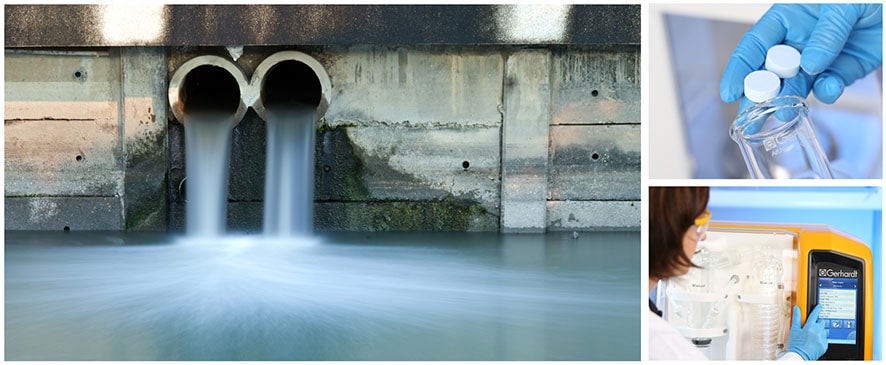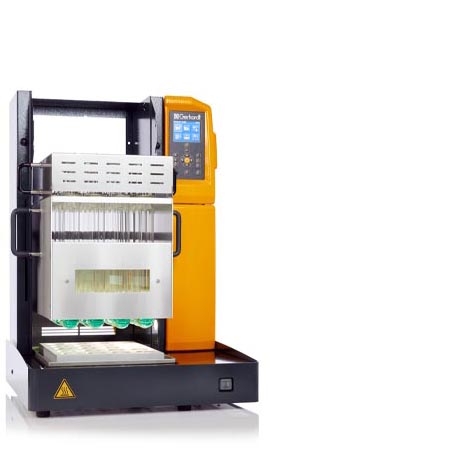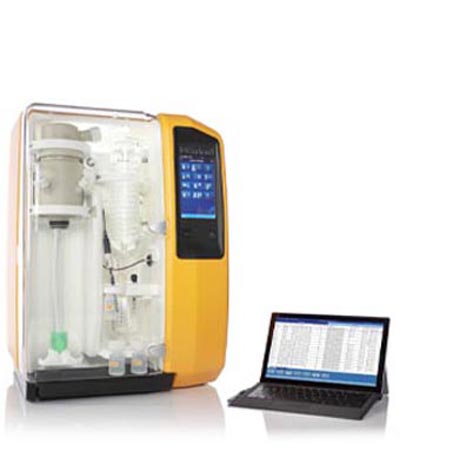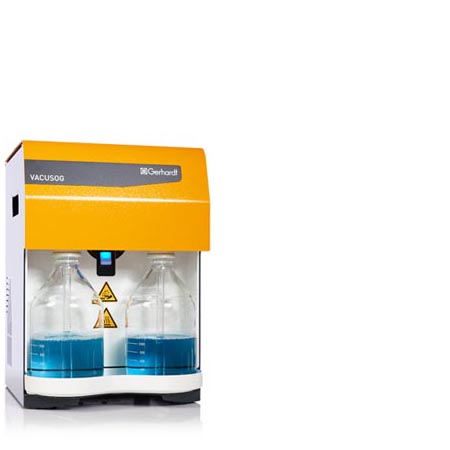Introduction
Nitrogen occurs in various forms in nature. In the nitrogen cycle, it is repeatedly transformed and then often enters water and wastewater via fertilisers, the excretions of humans and animals or through waste products from manufacturing industries. For the determination of nitrogen in water and wastewater, the most relevant substances are ammonium, organic nitrogen, nitrate and nitrite. Depending on the standard and the purpose of the determination, the following values are analysed:
- TNb (Total nitrogen) = TKN (Total Kjeldahl Nitrogen) + (Nitrate / Nitrite)
- Total organic nitrogen = TKN (Total Kjeldahl Nitrogen) - ammonium
- Total inorganic nitrogen = (nitrate / nitrite) + ammonium
- TKN (Total Kjeldahl Nitrogen) = Total organic nitrogen + ammonium
The composition and nitrogen compounds are particularly important for wastewater treatment. In the course of wastewater treatment in municipal wastewater treatment plants, organic nitrogen is converted into inorganic nitrogen. The TKN value (Total Kjeldahl Nitrogen), for example, is important for biological wastewater treatment. It has to be determined during the individual process steps for purifying the wastewater in order to monitor and possibly adjust the process. The ammonium content is also commonly important for waterworks and wastewater treatment plants, e.g. to determine the degree of contamination of the discharged water. At the end of the water treatment process, predominantly inorganic nitrogen is present. With the method described in the Application Note, based on the Kjeldahl method, the TKN (Total Kjeldahl Nitrogen) can be determined. With the other available applications "Determination of ammonium in aqueous samples" and "Determination of nitrate in aqueous samples", the individual values relevant for water and wastewater analyses can accordingly be determined.
Nitrogen determination in water and wastewater acc. to Kjeldahl
Sample preparation and planning:
The first important step in this method is to select a reasonable sample size. This should be based on the concentration of the chemicals used and the nitrogen content of the sample. For this purpose, we have prepared a table to simplify the routine.
| Sample amount [ml] | Concentration range N [mg/L] |
| 500 | <1 |
| 250 | 1-5 |
| 100 | 5-35 |
| 50 | 20-70 |
| 20 | 50-175 |
| 10 | 100-350 |
| 5 | 300-700 |
- App note: For the use of larger sample quantities, glass sizes up to 800 ml can be used by C. Gerhardt.
Digestion:
Now the selected volume of the sample is pipetted into an appropriate large Kjeldahl tube. Here, special attention should be paid to homogeneity. Furthermore, accurate addition is of great importance, as this has a great influence on the precision of the results. Then the catalyst tablets and the sulphuric acid are added. The digestion takes 90 minutes until the digestion has become clear.
- App note: Depending on the water sample type, these tend to foam. In this case, a slower temperature programme can be selected or anti-foaming tablets can be used.
Distillation + Titration:
In the next step, the digested water samples are transferred to the VAPODEST distillation unit. Here, depending on the model, the addition of the water, the alkali and the titration is done automatically. Also here, the boric acid used and the corresponding titration acid should correspond to the nitrogen concentration range. In this way, reasonable titration volumes and excellent precision are achieved.
- App note: In water analytics, low nitrogen concentrations are usually to be expected. Here, a low concentration of boric acid (between 0.1 - 1 %) and a likewise low concentration of titration acid (0.01 - 0.05 N) should be used. This improves the resolution and the standard deviation.
Exemplary values German standard methods for water, wastewater and sludge analysis (table 2)
| Sample type | Sample amount | Theor. content | Repeatability standard deviation | Comparison standard deviation |
|---|---|---|---|---|
| Surface water | 1-200 ml | 9.84 ppm | 0.57 ppm | 1.93 ppm |
| Industrial water drainage | 1-200 ml | 206 ppm | 3.30 ppm | 7.60 ppm |
| Municipal water treatment plan drainage | 1-200 ml | 23.3 ppm | 0.93 ppm | 3.18 ppm |




